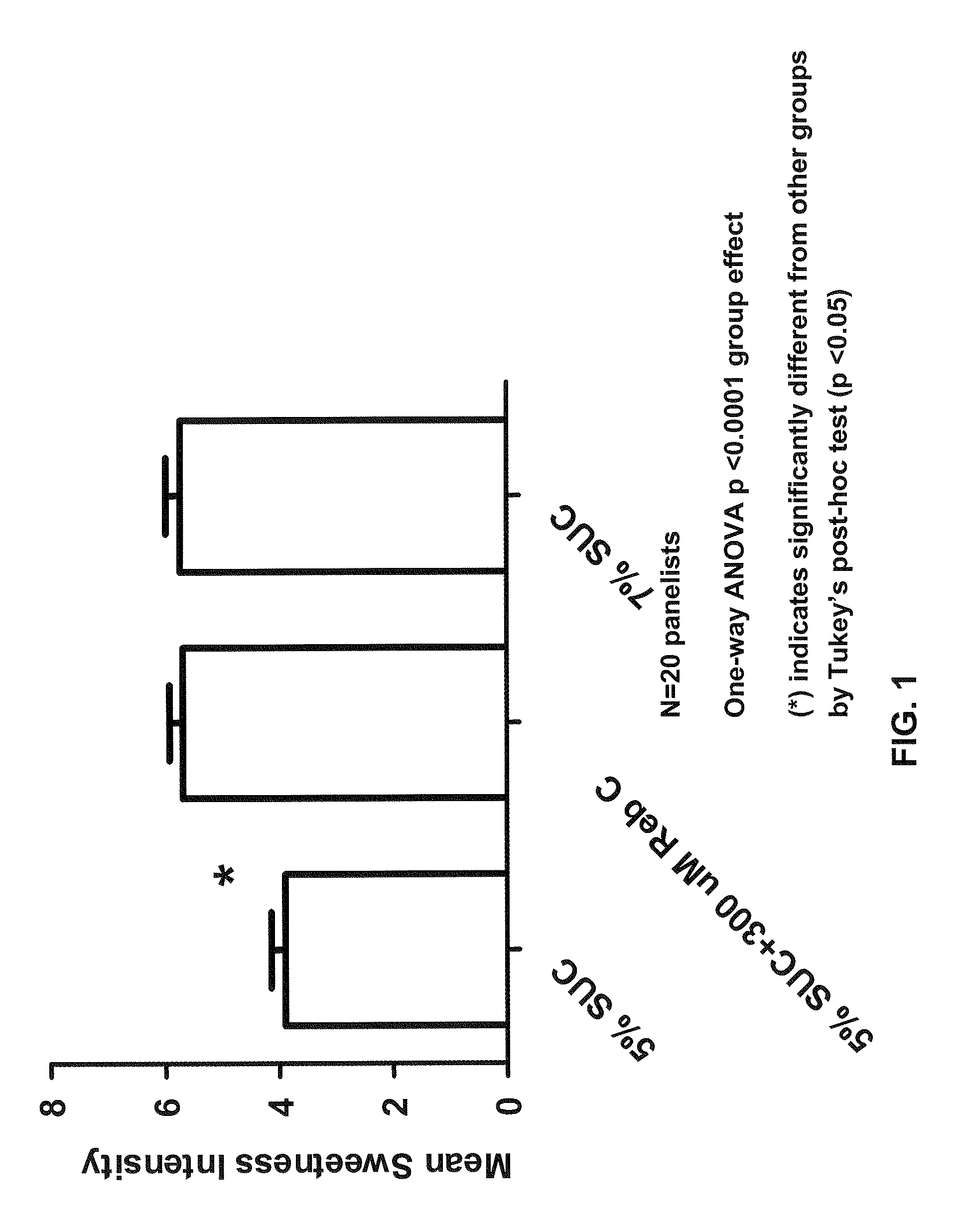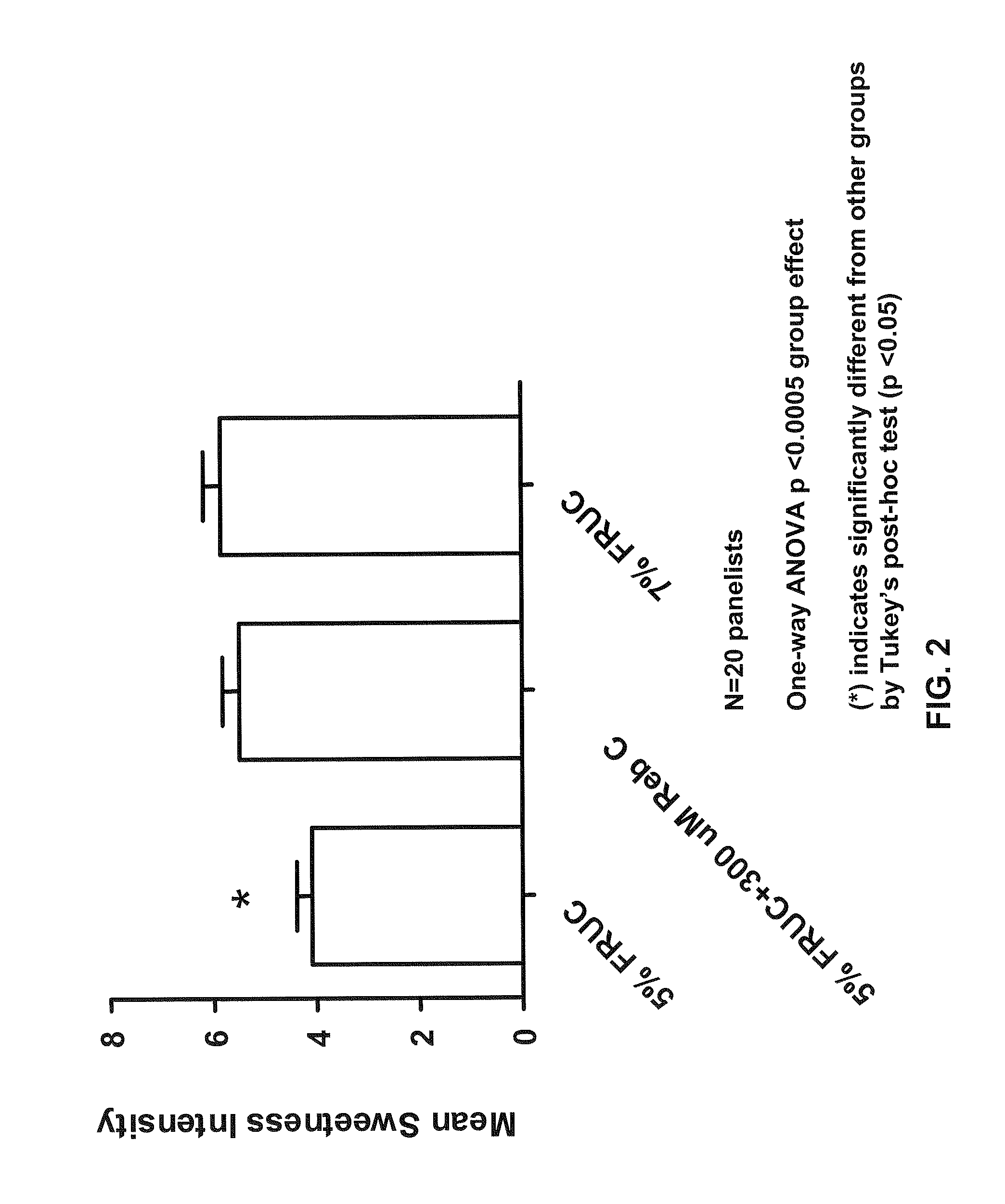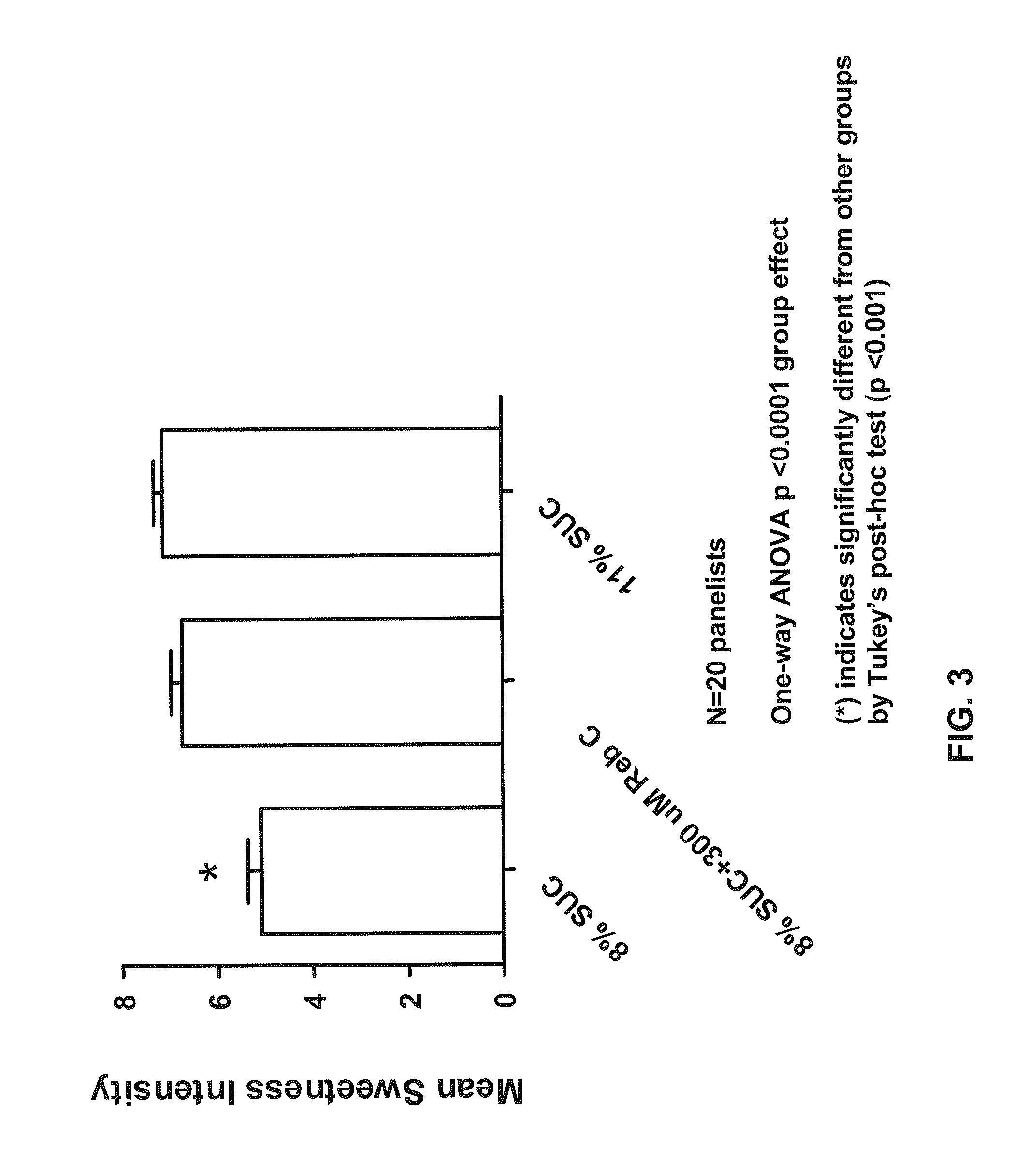Rebaudioside C and its stereoisomers as natural product sweetness enhancers
a technology of rebaudioside and stereoisomers, applied in the field of rebaudioside c, to achieve the effect of enhancing the sweet taste of carbohydrate sweeteners
- Summary
- Abstract
- Description
- Claims
- Application Information
AI Technical Summary
Benefits of technology
Problems solved by technology
Method used
Image
Examples
example 1
[0118]The sweetness enhancing effect of 300 μM Reb C (Chromadex, Calif.; purity 94.9%; 2.9% impurities other than water) on 5% (w / v-%) sucrose solution was evaluated in a double-blind controlled test conducted according to the following protocol. Three products were evaluated by trained judges as follows:
[0119]high concentration sucrose (7% w / v)
[0120]low concentration sucrose (5% w / v)
[0121]low concentration sucrose+sweetness enhancer (test compound)
[0122]The products were evaluated using a sequential monadic test protocol. Subjects were given three samples to evaluate. Each subject was directed to swirl the first sample in his or her mouth for 3-5 seconds, expectorate the entire sample into a discard cup, and then assess the sweetness intensity of the sample. The intensity was rated on a score card by marking a numerical value along a scale from 0 to 8 (e.g., 0=none, 2=slight, 4=definite, 8=very strong). Following the decision regarding the sweetness intensity, subjects were instruc...
example 2
[0128]The sweetness enhancing effect of 300 μM Reb C on 5% (w / v-%) fructose solution was evaluated in a double-blind controlled test as described in Example 1. The results of this test are presented in FIG. 2. As can be seen from FIG. 2, the judges found that the sweetness of a solution of 5% (w / v-%) fructose in combination with 300 μM of Reb C was close to that of a 7% (w / v-%) fructose solution.
example 3
[0129]The taste of a 250 μM Reb C solution was evaluated by a test group having five (5) subjects as follows (Forced-choice): Subjects were presented with 2 cups, each containing 10 ml of either 250 μM Reb C water solution or water (room temperature). The contents of the samples were not revealed to the subjects until after the test. Subjects were asked to sip most or all of the 10 ml from the first cup, swish the liquid in their oral cavity, and expectorate into a cup, then rinse their mouths vigorously with water. Soon thereafter, the contents of the second cup were sampled in the same manner. Then, subjects were asked to choose the sweeter of the two samples, or if not sweet, to describe the qualitative taste profile of the sample having a detectable taste. All subjects correctly identified the sample containing Reb C and gave the following qualitative taste descriptions:
[0130]
Subject 1:Metallic, not sweet;Subject 2:Aversive (“Nasty”);Subject 3:Slight sweet, astringent;Subject 4:...
PUM
| Property | Measurement | Unit |
|---|---|---|
| size | aaaaa | aaaaa |
| total thickness | aaaaa | aaaaa |
| total thickness | aaaaa | aaaaa |
Abstract
Description
Claims
Application Information
 Login to View More
Login to View More - R&D
- Intellectual Property
- Life Sciences
- Materials
- Tech Scout
- Unparalleled Data Quality
- Higher Quality Content
- 60% Fewer Hallucinations
Browse by: Latest US Patents, China's latest patents, Technical Efficacy Thesaurus, Application Domain, Technology Topic, Popular Technical Reports.
© 2025 PatSnap. All rights reserved.Legal|Privacy policy|Modern Slavery Act Transparency Statement|Sitemap|About US| Contact US: help@patsnap.com



